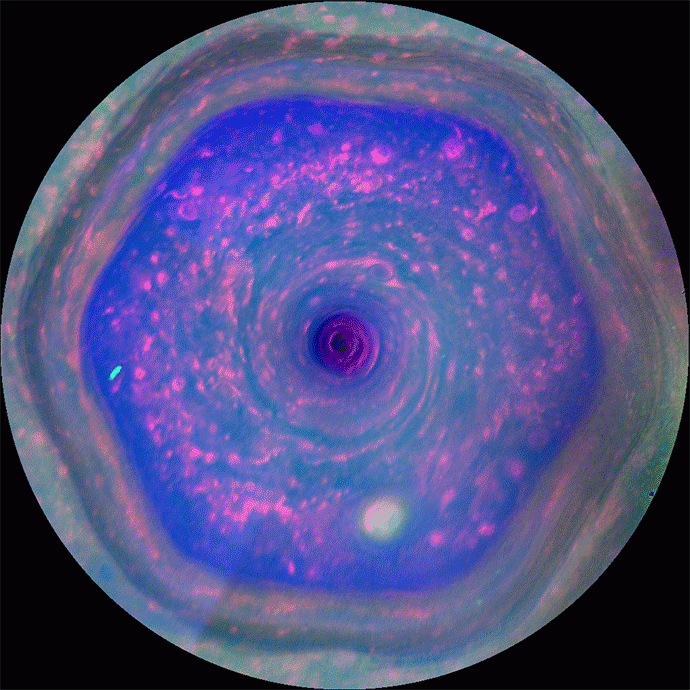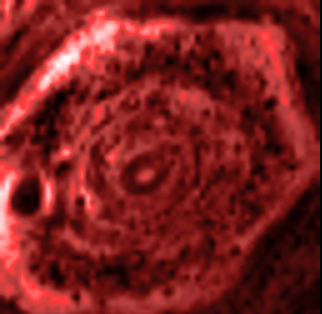NASA’s Cassini spacecraft has obtained the highest-resolution movie yet of a unique six-sided jet stream, known as the hexagon, around Saturn’s north pole.

This colorful view from NASA’s Cassini mission is the highest-resolution view of the unique six-sided jet stream at Saturn’s north pole known as ‘the hexagon.’ This movie, made from images obtained by Cassini’s imaging cameras, is the first to show the hexagon in color filters, and the first movie to show a complete view from the north pole down to about 70 degrees north latitude. Image credit: NASA/JPL-Caltech/SSI/Hampton University.
This is the first hexagon movie of its kind, using color filters, and the first to show a complete view of the top of Saturn down to about 70 degrees latitude. Spanning about 20,000 miles (30,000 kilometers) across, the hexagon is a wavy jet stream of 200-mile-per-hour winds (about 322 kilometers per hour) with a massive, rotating storm at the center. There is no weather feature exactly, consistently like this anywhere else in the solar system.

This infrared movie from NASA’s Cassini mission shows the churning of the curious six-sided jet stream at Saturn’s north pole known as ‘the hexagon.’ Image credit: NASA/JPL-Caltech/University of Arizona.
“The hexagon is just a current of air, and weather features out there that share similarities to this are notoriously turbulent and unstable,” said Andrew Ingersoll, a Cassini imaging team member at the California Institute of Technology in Pasadena. “A hurricane on Earth typically lasts a week, but this has been here for decades — and who knows — maybe centuries.”
Weather patterns on Earth are interrupted when they encounter friction from landforms or ice caps. Scientists suspect the stability of the hexagon has something to do with the lack of solid landforms on Saturn, which is essentially a giant ball of gas.
Better views of the hexagon are available now because the sun began to illuminate its interior in late 2012. Cassini captured images of the hexagon over a 10-hour time span with high-resolution cameras, giving scientists a good look at the motion of cloud structures within.